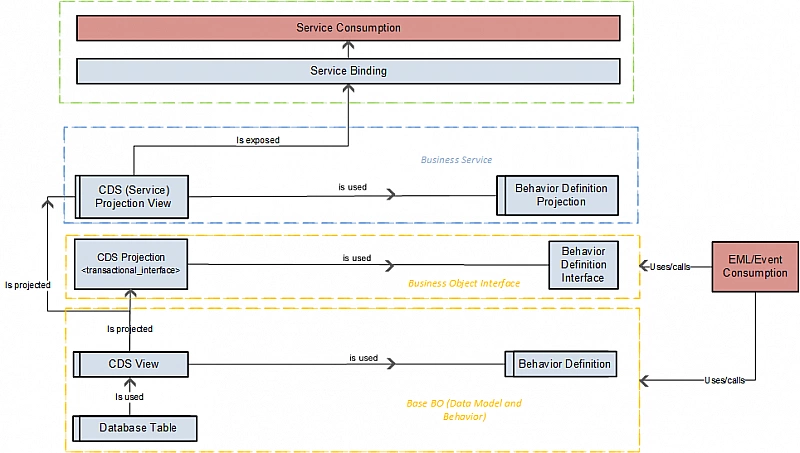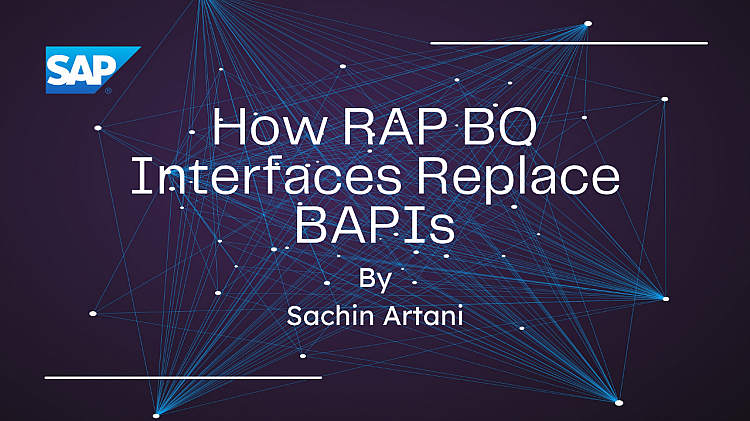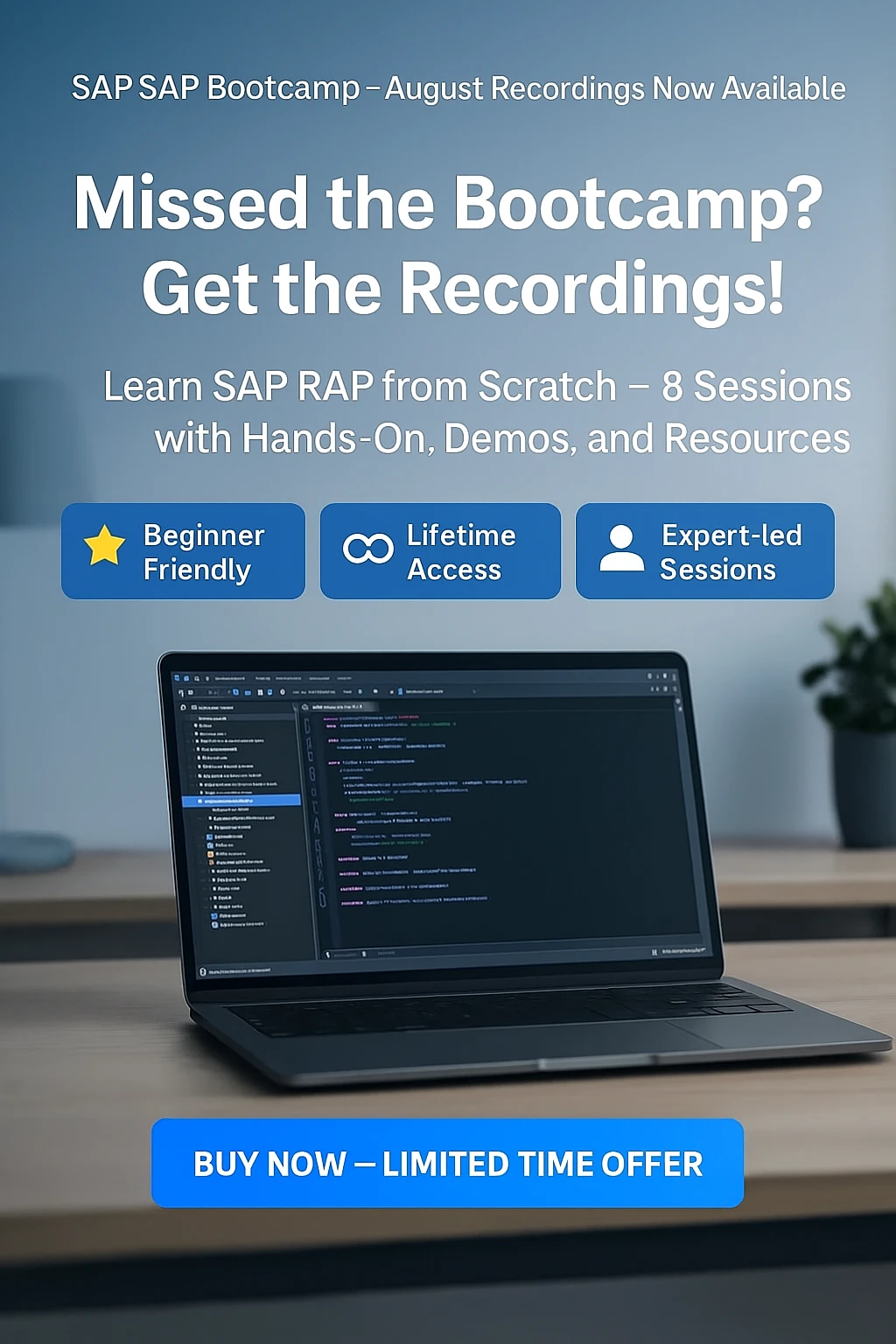If you've worked with RAP behavior definitions (BDEFs), you might have stumbled upon the keyword interface in a RAP BO definition and thought:
"Wait… isn't this just a behavior definition? What's this interface for?" 🤔
I had the same question the first time I saw it. But after digging into the concept and using it in real projects, I realized RAP BO Interfaces are more than just technical fluff. They're powerful tools for stability, flexibility, and clean API design.
Let’s break it down.
What Are RAP BO Interfaces?
A RAP BO Interface is a special kind of behavior definition that acts as a smart façade over a business object. It doesn’t contain its own behavior logic. Instead, it reuses and exposes the behavior from a base RAP BO while selectively controlling what gets exposed to consumers.
Think of it as a proxy layer that lets you design clean, versioned APIs without worrying about how the underlying BO evolves.

Why Should You Use RAP BO Interfaces?
Here’s why RAP BO Interfaces are particularly useful:
1️⃣ Lifecycle Stability
They let you evolve your base BO freely while keeping the interface stable and backward compatible for external consumers.
2️⃣ Multiple Use Cases
You can define one interface for a draft-enabled app and another for an active-only version, all using the same base BO.
3️⃣ Developer Flexibility
Internal teams can continue to add fields, validations, or actions to the base BO without disrupting public APIs.
4️⃣ API Governance
They help implement upgrade-safe, clean core APIs. External apps see only what they need, and nothing more.
Are RAP BO Interfaces a Replacement for BAPIs?
Yes, in many ways RAP BO Interfaces are the modern alternative to classic BAPIs in RAP-based development.
In the classic ABAP world, you used BAPIs like BAPI_BANK_CREATE to expose functionality externally. Today, SAP provides RAP BO Interfaces that serve the same purpose, modeled using RAP with CDS views, behavior definitions, and EML.
Example:
| Classic BAPI | RAP BO Interface |
|---|---|
BAPI_BANK_CREATE |
I_BANKTP |
BAPI_COSTCENTER_CREATE |
I_COSTCENTERTP_2 |
These interfaces are published and maintained by SAP and can be used in public and private cloud systems to perform structured and upgrade-safe business operations.
Where Can You Find BO Interfaces?
SAP provides a central place to browse all BO Interfaces depending on your system:
-
For SAP S/4HANA Cloud, private edition → RAP BO Interfaces – Private Cloud
-
For SAP S/4HANA Cloud, public edition → RAP BO Interfaces – Public Cloud
Each listing provides example code for consuming the interface.
How Do You Use a RAP BO Interface?
RAP BO Interfaces are used with EML (Entity Manipulation Language) in ABAP. All interaction such as creation, update, or action triggering is done by calling the interface in your RAP implementation class.
If you're curious about the usage syntax, just search for the documentation of a BO interface, for example, I_BANKTP, and SAP provides code snippets for all supported operations.
To see how a RAP BO Interface can be used in RAP, check out this step-by-step demonstration: SAP RAP Unmanaged Scenario with EML.
Final Thoughts
RAP BO Interfaces are the evolution of BAPIs in the RAP programming model. They offer a modern, cloud-ready way of building public APIs while keeping your business objects clean, stable, and extensible.
Check out the official documentation here.
If you're building APIs or integration layers in a RAP-based system, start using interfaces instead of creating your own logic-heavy services. They are built for exactly that and backed by SAP’s clean core strategy.
If you're looking to go beyond BO interfaces and learn how to build full-fledged RAP applications, Explore the Full SAP RAP Series.
Save it. Share it. Hope it helps!







